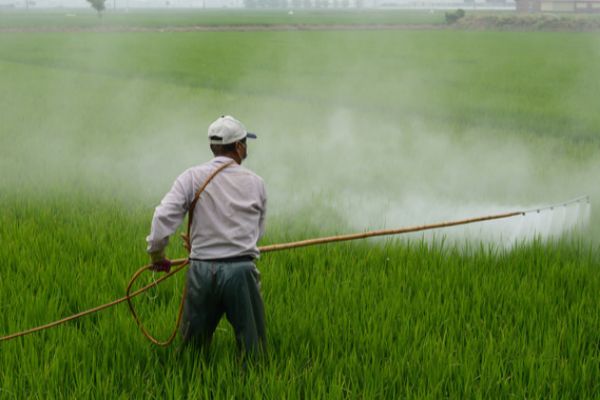- Aftermath: Pollution reaches the placenta
Although the use of so-called persistent organic pollutants (POPs) is already prohibited since the Stockholm Convention (2004), their ability to resist degradation allows them to survive even in today's environment. To the point of affecting the size of the fetus during pregnancy. This is indicated by a study developed in the United States and just published by the journal JAMA Pediatrics .
According to the authors, the analyzes carried out to date in this regard focused on the measurements of the weight and length of the baby after birth, "results that could be determined by genetic factors." In addition, "only chemicals were evaluated individually, when in reality people are exposed to a mixture of these compounds." Hence the need to be more precise.
Groups of researchers from various agencies, including the National Institutes of Health of the United States (NHI, for its acronym in English), went to work to carry out more exhaustive work. Records, stored blood samples and ultrasounds taken between week 16 and 40 of a total of 2,284 pregnant women between 2009 and 2013 were analyzed. All of them were enrolled in the study of fetal growth of the National Institute of Child Health and Human Development (NICHD).
The presence of 76 types of persistent organic pollutants in pregnant women was detected in blood samples. The levels were classified as percentiles, from 100 - the highest - to 1 - the lowest. On this table, the authors established comparisons based on the growth of the circumference of the head, abdominal and femur length of the fetuses of the women participating in the study.
This is how Pauline Mendola, responsible for the research, and his team observed "slightly smaller fetuses in women more exposed to these types of chemicals . " Compared to fetuses in the 25th percentile of exposure to organochlorine pesticides, those in the 75th percentile had the head circumference reduced by an average of 4.7 millimeters, the abdominal circumference presented 3.5 millimeters less and the length of the femur it was 0.6 millimeters shorter.
Regarding the levels of polychlorinated biphenyls similar to dioxins, they meant an average reduction in head circumference of 6.4 millimeters and a decrease in abdominal circumference of 2.4 millimeters. If the amounts of polybrominated diphenyl ethers (flame retardant chemicals used in furniture, electronics and other consumer products) are considered, they were associated with an average reduction in abdominal circumference of 2.4 millimeters and a shortening of the femur length of 0.5 mm
Persistent organic pollutants (also known in scientific terminology as POPs) include, among others, some organochlorine pesticides - such as dichlorodiphenyltrichloroethane DDT -, dioxins and furans . Except for dioxins (a byproduct of herbicide production and paper bleaching), which may have a natural origin (such as forest fires), POPs come from a series of chemical and combustion processes that were added to a wide variety of products that were used in agriculture or in the food industry, for example.
The production of many POPs is already prohibited due to its impact on the environment and public health. They have the capacity to generate serious damages in the nervous and reproductive system of the human being, as well as in their immunological capacity, greater risk of birth defects, effects on the metabolism and even the development of different types of cancer. However, due to their ability to resist degradation, they still survive in water and air and influence health, as the study recently published by the journal JAMA Pediatrics recalls.
"Even at low levels, there is evidence of a possible effect on fetal growth, although it is true that compared to a 2003-2004 US health and nutrition survey, COP levels were lower."
According to the criteria of The Trust Project
Know more- Science and Health
Animals Rabbit, declared endangered species
History The oldest figurative paintings in history, found in several caves in Indonesia: 43,900 years
Climate Crisis Madrid Climate Weather: "Life will continue on Earth when we humans are not"

